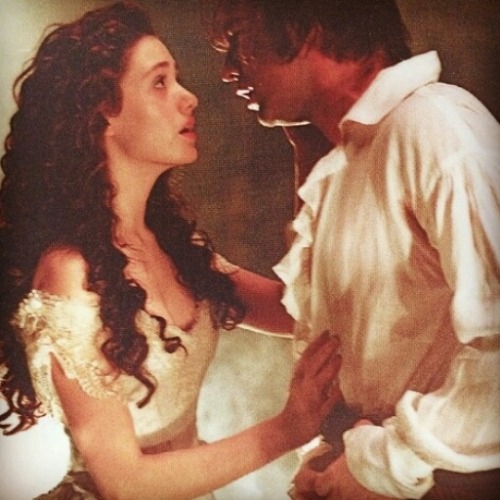


Both the literary piece and the film adaptation illustrate the major turning point in the narrative, regarding Christine Daaé’s character due to the fact that Mademoiselle Daaé outbreaks from the character of the damsel in distress to the female hero, since she lies back on the novel structure she is inserted into, controlling the environment around her, and solving the problems and contradictions of the Gothic novel.

As an example of this world-wide turmoil, the objective of this article is to analyse the trajectory of the character Christine Daaé in Gaston Leroux’s The phantom of the opera (1911) and in the homonymous cinematographic adaptation of 2004 in order to investigate how the author and narrator manage to subvert Mademoiselle Daaé’s representation by making usage of Gothic elements, such as the frame of a story within a story, the resource of the unspeakable, and the dichotomy of the surface and the profound (SEDGWICK, 1986) along with the symbolism of colour in media transposition. The Gothic genre comes to the surface as the rightful source which provided the necessary license to passionately describe the fears, terrors, and horrors that the social revolutions called forth in the name of progress. Here, in this case study, I propose a new category for evaluation, which I call ‘uncritical musical metareference’, or even ‘destructive homage’. Whatever one may think of Lloyd Webber’s music, these are provocative exemplars of what has been called ‘intermusical system reference’. These metareferential aspects are amplified in the 2004 film version, where the cinema audience is able to observe not only the ‘operas’, but also the opera ‘audience’ within the production.

However, outside of the diegetic context of the musical’s story, they also possess extracompositional qualities which reference musical, historical, and dramatic events, as well as musical styles, repertoires, and even specific works. These fragments themselves play important intracompositional roles in the plot. Departing from Gaston Leroux’s 1909–1910 novel, in which actual operas (notably Gounod’s Faust) function as important plot devices, Lloyd Webber and his librettists created three pastiche ‘operas’, parts of which are heard and seen in the course of the musical. A so-called megamusical, it is a popular musical theatre piece in which opera itself is a kind of character, and which refers on many levels to opera, operatic conventions, and specific operatic musical styles. Andrew Lloyd Webber’s The Phantom of the Opera (London, 1986) presents an interesting case of metareference.


 0 kommentar(er)
0 kommentar(er)
